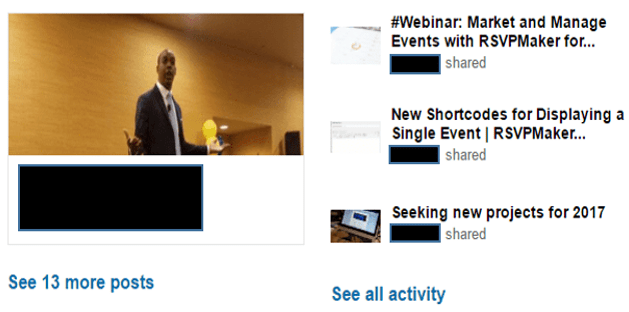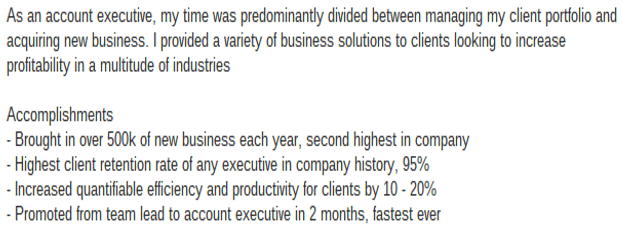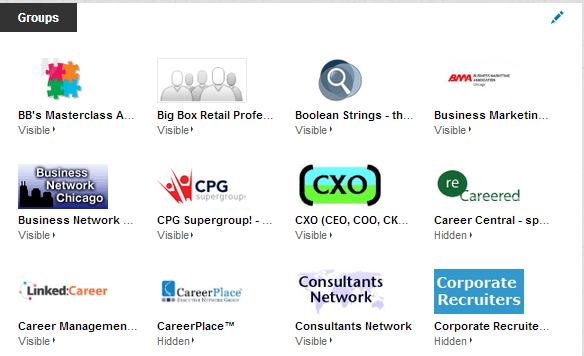Your LinkedIn profile is your business passport for new career prospects. It represents who you are as a professional and is a unique opportunity to showcase your skills, previous experience and achievements. As recruiters ourselves and more specifically as headhunters, this is one of the main tools we use to find our next top candidates. So here’s what you can do to optimize your LinkedIn profile and ultimately stand out as a top performer:
Perfect the 1st section of your profile

The idea is to make your LinkedIn profile professional, so don’t put a selfie as your principal picture. Instead, choose a head shot of yourself that is in high resolution and with a plain background. You should generally wear something smart in your photo but this can also depend on your profession e.g. if you’re a designer, you can be creative and convey some of your personality.

Next, you should insert your full name, including any title you may have, such as an MA or PhD e.g. Nick Mayweather, PhD. Beneath your name will appear your headline, where you should highlight your expertise and the area in which you want to keep growing. See the way the professional above also uses career-focused keywords, like ‘social media’, ‘growth’, ‘profit’, which will help recruiters discover him. Below the headline, make sure your location is always set to where you’re currently based. If you’re looking to work elsewhere, you can state this in the main title of your profile.

Last but certainly not least, your background photo. This is the most neglected element of a LinkedIn profile but it’s actually one of the first things recruiters see, so make sure you include one that reflects your career vision.
Next, build your executive summary

Give your executive summary the attention it deserves. Bear in mind that it’s the next section recruiters will see after your name and headline and in many cases, it can be the deciding factor between whether or not they contact you. Treat it like your elevator pitch and aim for at least 40 words that concisely and effectively communicate your skills, interests and career goals. You want to capture a recruiter’s attention so avoid generic, lengthy descriptions at all costs! And remember: it’s a PERSONAL statement, so make sure you write it in the first person.
Keep your posts and activity up-to-date

To get noticed and keep building your brand, post consistent content aimed at your target audience and their key interests. If you’re a writer, publish at least one blog post per week. Yet be mindful of posting multiple times a day. This may seem like spam and could discredit your professional image. And now for the content itself. Make your headline short and compelling, encouraging your followers to click on the post. Your content should be positive and engaging, so any inappropriate messaging or criticisms must be avoided at all costs! And before uploading anything, you MUST proofread it for spelling and grammar mistakes. Referring to your interest in ‘marteking’ will do you no professional favors.
Clearly describe your work experience

This is NOT your CV. So just include BRIEF summaries of your key work experiences that coincide with your career coals. A recruiter will ask for your CV if they want to learn more. Above all, try to establish credibility – a concise, interesting story will resonate with recruiters but a direct copy and paste of the job description won’t. Include specific, concrete examples, such as the “95% client retention rate” maintained by the Account Executive in the above example. Make sure everything is fact-based and the dates align with those stated in your CV.
Include all education and any volunteer experiences
Fill in all previous education, including schools, colleges or universities and any exam grades you received. To portray yourself as a well-rounded individual, include any extracurricular activities you participated in during your studies. Make sure this information is really accurate – you don’t want to end up like Yahoo’s ex-CEO Scott Thompson, who had to step down after falsely claiming he had a computer science degree.

As you can see in the image, when inserting your volunteer experiences, you should explain your role and how long you did it for followed by the organization and the cause it supports. This can really impress recruiters and show that you have a good moral character with an interest in social welfare.
Highlight your skills and get endorsements
Showcase your top skills that reflect your career objectives and describe you as a professional. This will also help your target recruiters find you. And as tempting as it may be, DON’T LIE. Your next employer will quickly learn that your supposed ‘advanced use of Excel’ is a lie when you can’t even plot a graph. The next step is to ask other professionals that you know well, like your colleagues, to testify to your actual skills by endorsing you.
Ask for recommendations

Validations from previous business partners or colleagues will really impress recruiters and solidify your image as a trustworthy and valued professional. Try to ask for recommendations from senior executives, like in the example above, rather than junior associates – these will resonate more with recruiters.
Update your accomplishments
Portray yourself as a top performer by highlighting your specific achievements and updating your profile whenever you successfully carry out a project, receive an award or certification, obtain an impressive grade in a competitive exam, or complete a course. You should also insert your language proficiency, but don’t exaggerate your level. Only include the languages you are truly confident in – a recruiter won’t be interested in your ‘elementary level’ of German.
Carefully consider your interests

Acquire knowledge and get inspired by following groups and thought leaders. Many recruiters actually go through industry-related groups searching for talent, so try to join groups that really reflect your brand and genuine interests, rather than just joining ones for the sake of it. You’ll prove to recruiters that you are passionate about other topics besides your job alone, making you seem like a more approachable professional.
And finally…
Expand your network!
First of all, start by setting your profile to public, making it open to new connections. When sending connection requests, make sure they are personalized and not just the automatic message. Professionals are always impressed if you explain why they should connect with you because that shows you’ve done your research. Nurture your relationships with your network and send them messages of congratulations when they obtain new jobs or awards, about which you’ll receive a notification. Finally, try to check your inbox daily and respond to messages promptly, making sure you maintain a formal tone.
So, start by following these useful tips and above all, remember to keep your LinkedIn profile PROFESSIONAL. After all, it is a business social network!
To receive professional advice on how to fully optimize your LinkedIn profile, check out our career coaching services today.